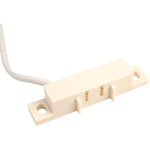Recent Searches
- {{query}}
Suggested Queries
- {{query}}
- {{this._page.suggestions.ScopedQuery}} in {{scope}}
Brands
- {{brand.contentName}}
Categories
- {{tier.contentName}}
Other Suggestions
- {{page.contentName}}
Item added to basket:
{{ _page.IncVat ? _page.AddedItem.TotalPriceTextIncVat : _page.AddedItem.TotalPriceText }}

